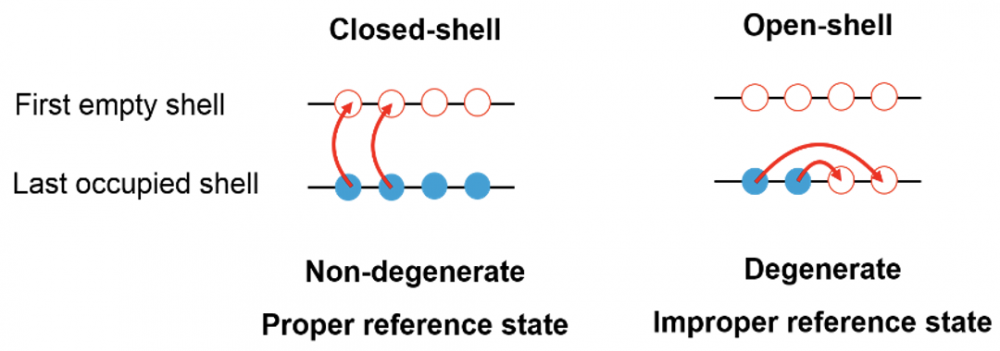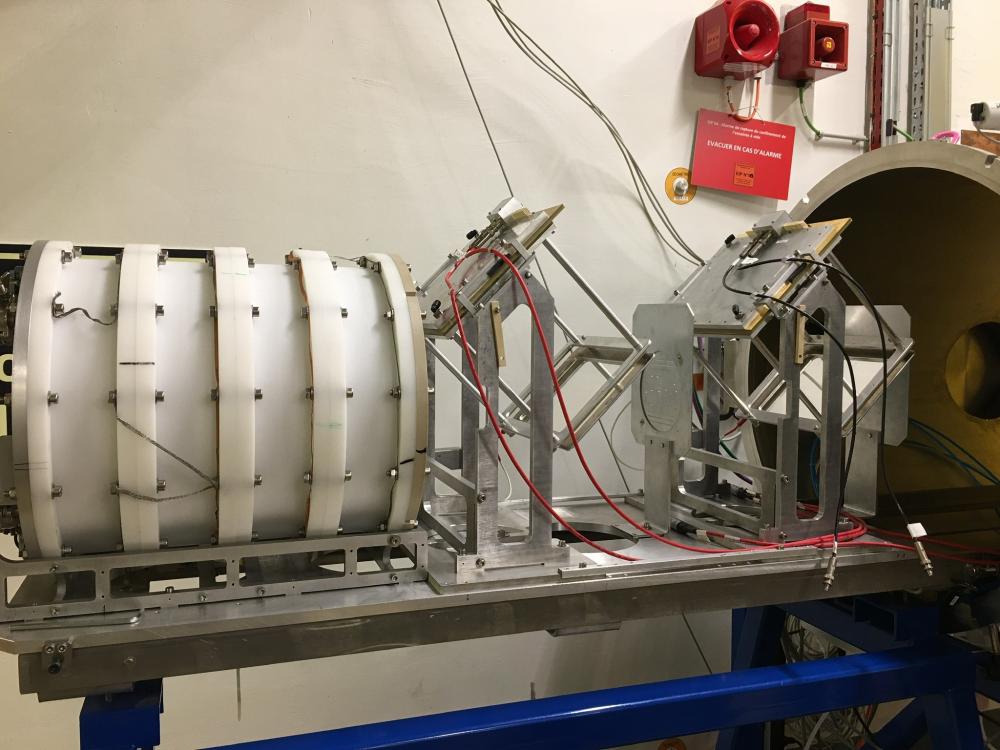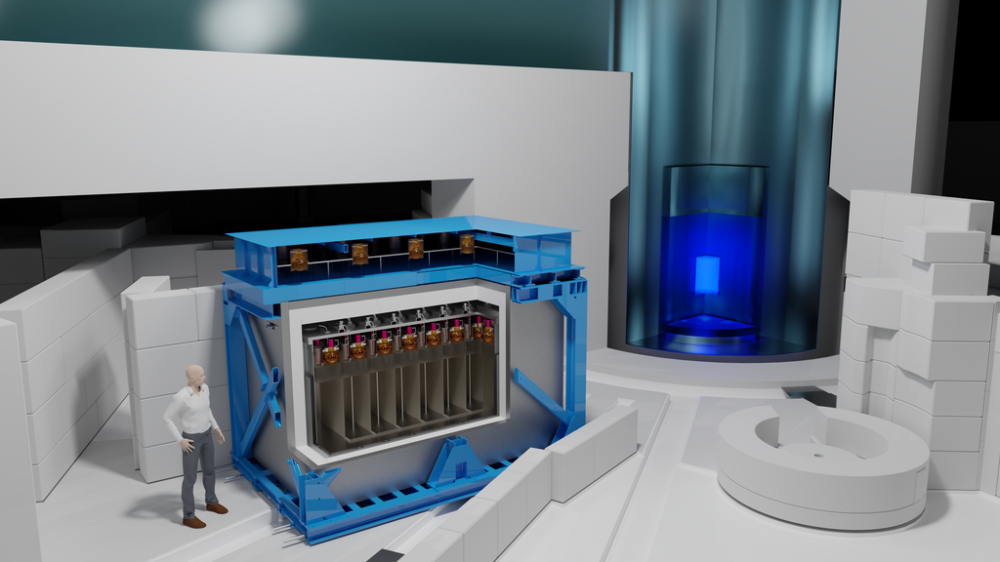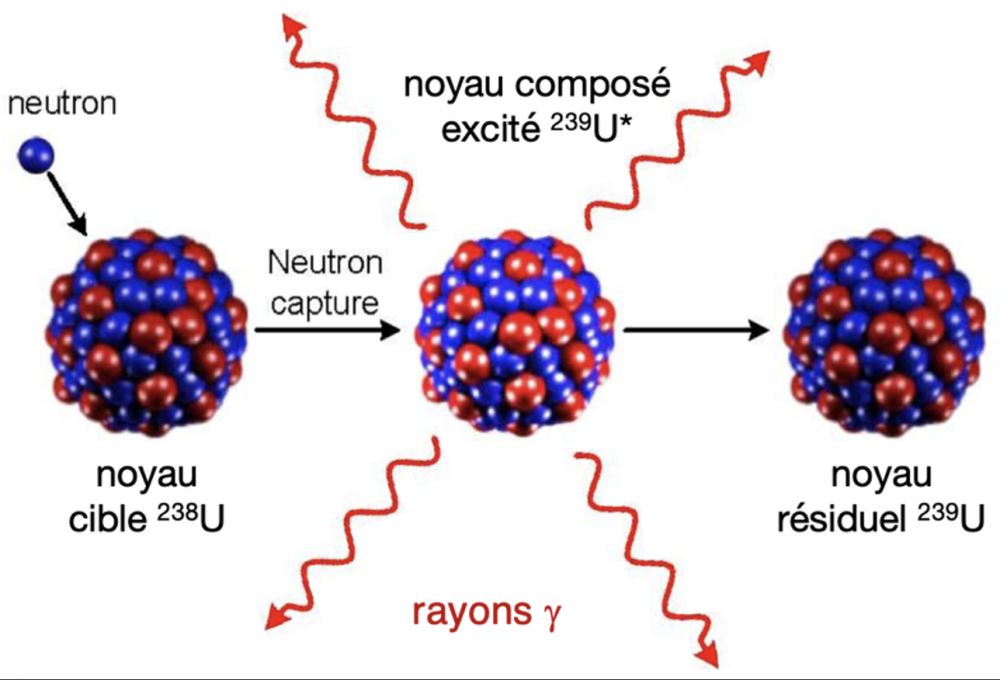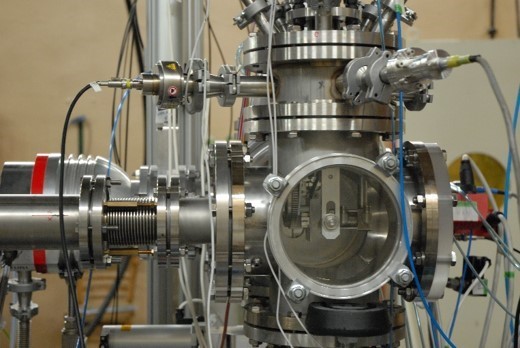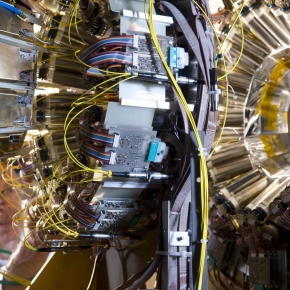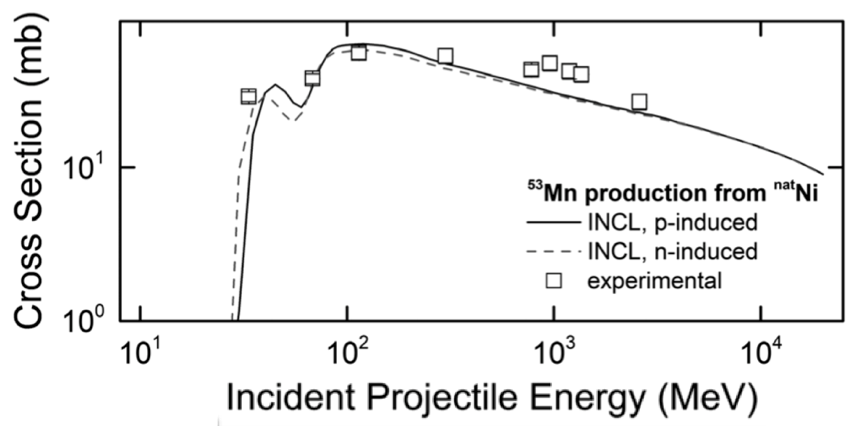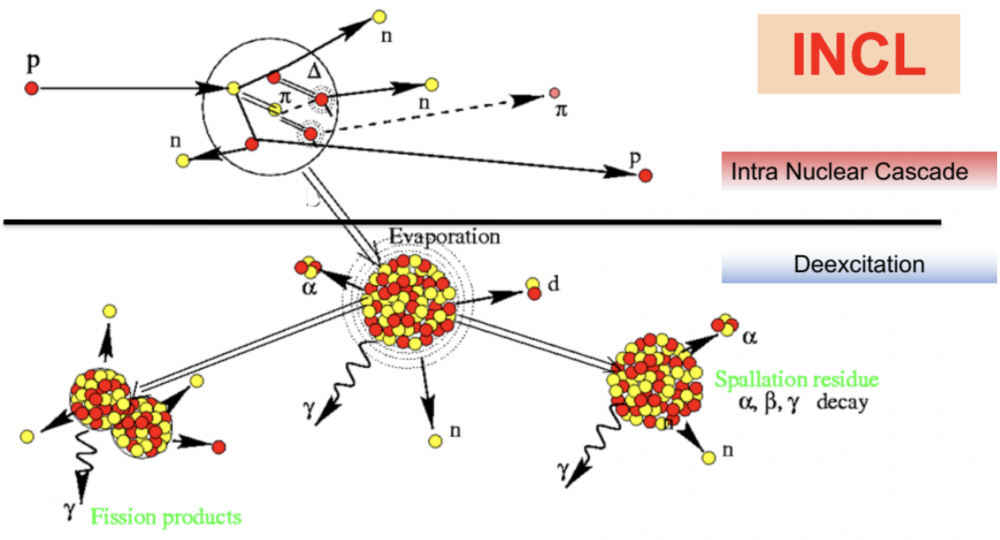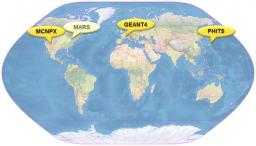The final piece of a longstanding adventure started in 2014 with an experiment led by Irfu and RIKEN Nishina Center has been set with the publication of a paper containing the comparative study of dineutron correlation in 11Li, 14Be and 17B [1]. This paper published in Phys. Lett. B completes a series of publications on the topic [2,3] issued from the same experiment using the MINOS device designed and built at Irfu. It suggests that such kind of correlations is a universal feature of Borromean halo nuclei.
Prediction of nuclear properties based on a realistic description of the strong interaction is the main quest of low-energy nuclear theory. One of the issues lies is the cost of solving Schrödinger’s equation that scales exponentially with the number of nucleons. Consequently, theoretical predictions based on first principles have long been limited to very light nuclei, to nuclei with specific proton and neutron numbers offering simplifications or to their ground states. While releasing each of these three constraints separately is ongoing, overtaking them at the same time constitutes the current forefront in the field. Employing a novel many-body formalism [1] recently developed by the PAN@CEA (“Problème à N corps au CEA”) collaboration (DRF-DAM-DES), the calculation of collective excitations, i.e. nuclear rotations and vibrations, in all medium-mass nuclei is envisioned for the first time [2,3]. This work paves the way to large-scale predictions of nuclear properties from first principles.
Reactor antineutrino anomalies are a decade-long puzzle in neutrino physics. They are manifested by deviations of the order of a few percent between measurements and predictions. These deviations have been observed in the number of antineutrinos measured by more than a dozen experiments at nuclear reactors, and in the shape of the kinetic energy distributions by the seven most recent ones. They could have been the way to a new physics beyond the standard model, but the recent experiments, including the STEREO experiment carried by IRFU, have closed this door.
In a work just published in Physical Review Letter [1], a team of physicists from IRFU and the Laboratoire National Henri Becquerel of DRT have shown that these anomalies could come from biases in the measurements of fission electrons used as a reference for the prediction. They have developed a beta strength function model to reduce the biases in the calculation of the energy spectra of electrons from fission of fissile reactor nuclei. The two "anomalies" on the antineutrino flux and the "bump" at 5 MeV in the antineutrino energy spectrum are now reproduced by their model. This allows to propose an explanation to solve an enigma of more than 10 years.
After several years of development at Saclay, the first part of the Falstaff spectrometer was moved to GANIL in 2021 and then installed on NFS for the study of uranium 235. The experiment that took place in November and December 2022 was the first to use an actinide target on SPIRAL2. It demonstrated the good performance of this device.
The final results of the Stereo experiment have just been published in the journal Nature. A record of precision is established for the spectrum of neutrinos emitted by the fission of 235U, measured between 9 and 11m distance from the ILL reactor core in Grenoble. The hypothesis of a sterile neutrino to explain the reactor neutrino anomaly is rejected. The quality of these direct neutrino measurements now surpasses that of the underlying nuclear data describing the beta decays of fission products. Stereo provides the community with a fission neutrino spectrum corrected for all detection effects, which will serve as a reference for future reactor experiments and points out residual biases in the nuclear databases.
The Stereo experiment has just completed a beautiful scientific adventure that began in 2011 with the revelation by the IRFU group of the "reactor antineutrino anomaly". Physicists were left with a significant deficit of 6% between the flux of neutrinos measured at the reactors and the predicted flux. The history of science has taught us enough about the potential richness of new phenomena that can hide behind an anomaly. What was going on here was the possible existence of a new type of neutrino that would open up a new area of physics beyond the standard model. Without any direct interaction with matter, this neutrino, described as "sterile", could however mix with "standard" neutrinos and thus leave an imprint of its existence through ... a deficit of count rate in our detectors.
The DPhN, in collaboration with the Department of Reactor Studies of Cadarache (DES) and the Institute of Particle and Nuclear Physics of Charles University in Prague (Czech Republic), studied the properties of gamma rays emitted by uranium isotopes during neutron capture reactions. Gamma-ray spectra measured at CERN's n_TOF facility were used as a test bed for nuclear reaction models and their ingredients, including the photon strength function that characterises the ability of a nucleus to emit or absorb photons. This work has enabled consistent modelling of the photon strength functions of the uranium isotopic chain (234U, 236U, 238U) and confirmed the presence of a particular oscillation mode of the nucleus shape at low excitation energy. This study was carried out as part of the PhD thesis of Javier Moreno-Soto [1] and the full results are published in Physical Review C [2].
In December 2019, the NFS (Neutrons For Science) facility received its first proton beams, delivered by the linear accelerator of the new Spiral2 facility at the GANIL. On the fringes of the progressive commissioning of the accelerator in 2020, short beam periods were used to successfully test several NFS components. The first experiments are planned at the facility in the fall of 2021.
A first beam of protons accelerated up to 33 MeV was sent in December 2019 to the NFS irradiation station (Figure 1), coupled to a pneumatic transfer system aiming at transporting the irradiated samples to a measurement station. The production cross-sections of different nuclei (obtained through irradiation of iron and copper samples) were thus measured. The results of this test are in agreement with previously published data. The irradiation and measuring device, built and operated by physicists from the NPI laboratory in Rez (Czech Republic), will be used in the future for novel measurements of reaction cross sections by activation.
Thanks to the GANIL accelerated heavy ion collisions and the detection of reaction products with the INDRA detector, it was possible to deduce the evolution parameters of chemical elements in stellar phenomena.
These chemical elements, light nuclei (d, t, 3He, α, 6He…), are created by aggregation of protons and neutrons during the collision between the projectile nucleus and the target nucleus. The measurement with INDRA has shown that their production rate is higher than the rate expected by the ideal gas model. The work of the INDRA collaboration, with the help of three theorists, consisted in performing a Bayesian analysis on the data to extract the thermodynamic observables taking into account the effects of the nuclear matter environment and then comparing the data thus obtained with a model.
This result is important since it measures the chemical concentration of aggregates in areas of low nuclear density, the same densities found in nuclear collapse supernovae. The process of this stellar event is largely dominated by the emission of neutrinos that can be captured by free neutrons or present in the aggregates. Thus the chemical concentration of these elements determines the neutrino transport and thus the evolution of the supernova.
Meteorites are bombarded throughout their journey by cosmic radiation. This cosmic ray exposure (CRE) is a formidable footprint of their history, provided of course that we know how to decipher it. The interaction of cosmic radiation with the atomic nuclei constituting the meteorite will produce so-called cosmogenic isotopes, very often radioactive. Measurements of activities, once the meteorite is found on earth, associated with a model can allow us to go back to its pre-atmospheric size, its CRE ages, its terrestrial age, and even to better understand this cosmic ray flux. This type of model is based on a key ingredient: the elementary cross sections of isotope production. For the first time, these have been provided only by the INCL nuclear reaction code developed at Irfu in the framework of a study of iron meteorites [1], thus increasing the precision of the analyses.
INCL (Liège intranuclear cascade) is a simulation code known for its ability to model light particle-nucleus interactions. It is used in very various fields, such as proton therapy, neutron sources, radioactive ion beams or ADS's (Accelerator Driven Systems). In order to extend its capabilities in the field of higher energy reactions, in connection with cosmic rays or with the study of hypernuclei, a team of physicists led by Irfu has recently developed a new version of the code involving strange particles. This work was at the heart of a recently defended thesis (2019) and the new possibilities offered by this code were published in early 2020 in the journal Physical Review C [1].
NFS (Neutrons For Science) is an experimental area of the Spiral2 facility (Ganil, France) that will provide high intensity neutron beams for energies ranging from 0.5 to 40 MeV. The neutrons will be created by collision of Spiral2 charged particles with carbon, beryllium or lithium targets, thanks to a key element of NFS, the converter. The design of this one is a real challenge because it has to withstand a high power deposited by Spiral2's intense beams. In this context, Irfu has designed and built a converter able to support a power of 2 kW. NFS neutron beams will provide information in an unexplored energy domain. Fundamental physics, nuclear reaction modelling and nuclear databases will thus benefit from a unique tool.
For many years, the SPhN Spallation group has been developing, in close collaboration with the University of Liège, a model describing spallation reactions, called INCL. Based on its remarkable performance in an international evaluation, this model has just been included in three of the major simulation codes used worldwide to model and design the facilities in which these reactions occur.


